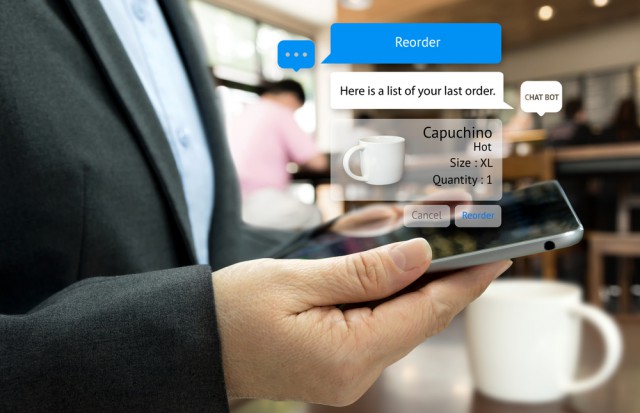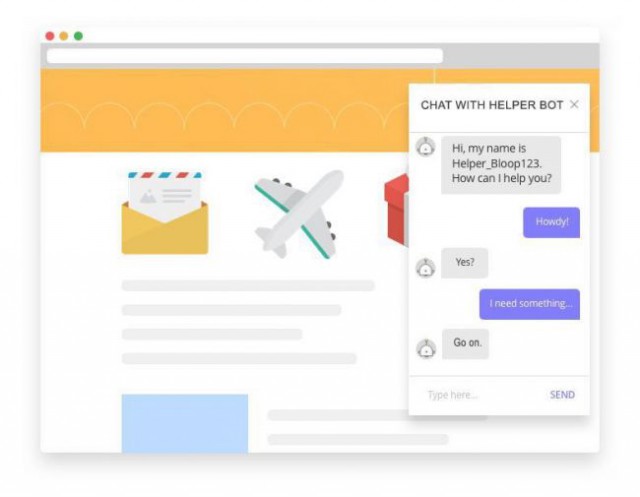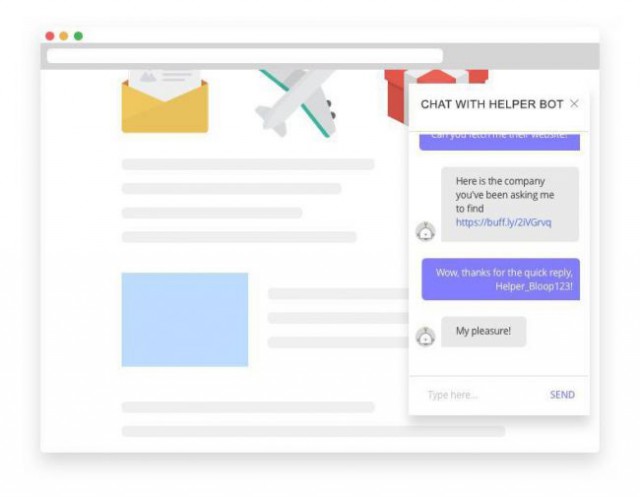How to make a chatbot

In the modern day and age, customers expect nothing less than a light speed response to their queries. How is that possible, you might ask? One word: chatbots.
In B2C services the workforce needed to handle communications is hard to manage. Sometimes you need less, sometimes you need more, and sometimes you just get swarmed. For a startup, an issue like this is hard to micromanage. On the other hand, the price for failing to do so can be heavy. Luckily, B2C online conversations are similar enough, meaning that developers can pre-program a response for any type of conversation within their scope. This is the baseline that opens up great opportunities for automation via chatbots.
Little by little they are getting smarter. With promising advancements in Machine Learning, the number of potential purposes to create a chatbot is only growing. Without further ado, here are the steps to make a bot for a website.
Defining Your Goals
In order to learn how to make a bot for a website, you need detailed ideas for what kind of bot you really need.
1. Outline the target audience your web chatbot will interact with
Make sure to develop clear feedback mechanisms as well as the required Mechanical Learning capabilities. Run analytics on a regular basis and pay special attention to the support logs.
2. Choose the mission for your future bot
Normally, chatbots fall under these specializations:
- support bots
- e-commerce bots
- news bots
Taking this into account, decide what your end goal is. It can be:
- creation of a streamlined user experience
- customer engagement
- new sales
3. Create a plan for potential conversations
Based on the queries, your chatbot will eventually offer certain kinds of actions meant to help users reach their goals. Create a scenario for the types of interaction your bot is going to have. Determine the bot’s responses based on the input. Plan different branches of the dialogue accordingly.
4. Map out the UI elements
Aside from being an AI, on the user’s end, your custom chatbot will have few differences from a basic chat window except for some minor additions. Here is the full list of what you’ll have to put together:
Persistent Menu -- a UI element that will open up a new window and allow the user to change settings.
Buttons -- made to present your user with key decisions. These will narrow down the conversation to certain scenarios that produce specific results.
Get Started Button -- this one will invite the user to enable the chat window with your AI helper.
Reply Button -- the button that sends the message to your chatbot.
Smart Reply Button --- this type of button will provide pre-made response options based on user’s personal information and general context of the conversation.
Cards -- this element is made to keep huge chunks of information in compact blocks. Their main purpose is to provide information and tips.
Now that you’ve determined the general structure of your chatbot, it’s time to set the logic of how your chatbot is built.

Retrieval or Generative?
The first decision you make about your chatbot is how simple it is. Can you go with the pre-built rule-based response patterns to handle the conversations or do you need to create your own NLP and ML? There are two general ways you can carry on here:
Retrieval based. A simplified collection of responses to resolve common issues. Not the best type of AI. Usually, these bots don’t try to come off as humans. From the get go they introduce themselves as helper_bot123 and offer assistance. This way, users know they’re not a very sophisticated dialogue partner.
Pro: No grammar mistakes.
Con: Only for pre-scripted queries. Need to pass certain cases to human customer support representatives.
Generative. An attempt at a full-fledged self-learning AI. This type of bots are aimed at mastering the NLP (Natural Language Processing). Generative chatbots try to process human responses on the fly and categorize them. And it requires a huge bulk of work done by developers to set up NLP and Machine Learning algorithms.
Pro: Analyzes the semantics of human sentences.
Cons:
- Unable to fully replicate a human companion.
- Needs a huge amount of training material.
- Occasionally, bad grammar.
As you can see, generative chatbots take on a huge challenge. They also fail more spectacularly which can be more obvious to the user than the fact that they pack much more potential. Today’s customer is expecting nothing less than a refined UX that should be very close to a normal human interaction. Consider this when you prepare to create web bot that will text your users.

Choosing the Framework
After working out the UX, it’s time to get neck deep into technical components. You can start by choosing the framework for your future AI. Here are some of the most common tools we use in the course of our web development.
Microsoft Bot Framework -- Microsoft Bot Framework does a great job at setting up input and output, conversational capabilities as well as being able to deliver a scalable solution that does the job well. Some of the most prominent components are Developer Portal, Bot Directory as well as the Bot Builder SDK.
The SDK is built around two components that can be used as a separate:
- Bot Connector integration program
- LUIS.ai -- (aka Language Understanding Intelligent Service) NLP component
Api.ai provides a huge number of domains as well as its own set of concepts that create an intricate algorithm to provide comprehensive solutions for some of the most complex UX scenarios.
Chatbots are not a gimmick that companies use to promote themselves under the premise of innovation. They are indispensable for the global business. Your chatbot is a one-time investment that will be key to making your "24/7 support" a reality. Especially now when every 2nd person prefers a text based chat to a phone call.
To conclude, here is a list of templates for non-programmers that will let you set up a simple online helper as a webmaster with zero coding experience. Our guide should provide you with general context to build an integrated chatbot for a website. Here you will find the most relevant design concepts and decisions that can help you make this extension a valuable asset to your team. For more development solutions, make sure to visit our website
Alexey Semeney, CEO and Founder, DevTeamSpace.
Published under license from ITProPortal.com, a Future plc Publication. All rights reserved.
Photo Credit: Zapp2Photo/Shutterstock
